Net Tax Rate Method
When calculating and declaring VAT in Switzerland, not all businesses have to use the standard effective billing method. For small and medium-sized enterprises (SMEs), the net tax rate method offers a simplified alternative. Instead of separately calculating input and output tax, VAT is settled using a flat percentage of total turnover.
In this article, we explain how the net tax rate method works, who can use it, and what the rules are in 2025. We also look at the advantages and disadvantages of this approach, with practical considerations to help you decide whether it’s the right fit for your business.
Book a free initial consultation with our experts.
Book a callHighlights
- SMEs benefit from the net tax rate method due to reduced administrative effort for VAT
- Suitability based on turnover below CHF 5.024 million and tax liability up to CHF 108,000
- Specific net tax rates of between 0.1% and 6.8% reflect standard industry input taxes
- Advantages: Simpler VAT calculation, fewer settlements, clear tax liability
- Disadvantages: Industry flat rates can lead to inaccuracies
Content
- Net Tax Rate Method
- Highlights & content
- What is the net tax rate method for calculating VAT?
- Who can use the net tax rate method?
- How does the net tax rate method work in practice?
- What are the applicable net tax rates?
- How does a company opt to use the net tax rate method?
- Advantages and disadvantages of the net tax rate method
- When does it make sense to opt for the net tax rate method?
- Lean on Nexova’s expertise
- Trusted by over 150 companies
- FAQ
What is the net tax rate method for calculating VAT?
The easiest way to understand the net tax rate method for VAT is to compare it to the conventional effective billing method.
Effective billing method
All Swiss companies with an annual turnover exceeding CHF 100,000 must register for and pay VAT in Switzerland. The conventional way to calculate and account for VAT is known as the effective billing method. In short, it involves declaring the VAT collected on sales turnover (usually at the standard rate of 8.1 %) and deducting the VAT paid on production costs (input tax).
The difference is the VAT amount the company owes to the Swiss tax authorities. With this method, VAT is accounted for and paid quarterly.
Net tax rate method
Not all companies are required to use the effective billing method for calculating VAT thanks to an alternative approach known as the “net tax rate method”, sometimes called the “balance tax rate method”. The net tax rate method was introduced to ease the administrative burden for small and medium-sized enterprises (SMEs) and simplify the VAT accounting process.
The method involves calculating the VAT liability at a flat rate of turnover while ignoring input tax deductions. The flat rate used is lower than the statutory VAT rate of 8.1 %, and therefore implicitly factors in the input tax deduction without companies needing to calculate them separately. In other words, it makes an implicit estimate of the input tax which is reflected in the lower net tax rate percentage.
Each industry has its own specific net tax rate based on the expected average input costs of the industry in question. For example, service-related industries, such as IT services, tend to have a higher net tax rate of 6.2%, because one would expect their input tax to be quite low compared to their output.
In contrast, industries involved in selling goods with a high production cost and relatively low mark-up, such as a new car trader, have a much lower net tax rate of 0.6%, as their input tax value is expected to be quite close to the value of their output tax.
With the net tax rate method, the VAT owed is calculated and settled every 6 months as opposed to quarterly. As of 2025, businesses with turnover under CHF 5.005 million can also request annual VAT reporting under the net tax rate method (Art. 35 para. 1 lit. b VAT Act).
Book a free initial consultation with our experts.
Book a callWho can use the net tax rate method?
The net tax rate method was specifically created to simplify VAT accounting for SMEs. Therefore, larger businesses with a higher turnover may not be eligible to settle their accounts using this approach. In general, a company may opt to use the net tax rate method if they meet the following two criteria:
- Their annual taxable turnover (including VAT) does not exceed CHF 5.024 million.
- The tax owed does not exceed CHF 108,000 per year. This is calculated by multiplying the total taxable turnover by the net tax rate which applies to their industry.
The consequence of the second point is that, for industries with a higher net tax rate, the taxable annual turnover needs to be well below CHF 5.024 million. For example, an architectural office with a net tax rate of 6.2 % may only be allowed to use the balance tax rate method if their annual taxable turnover does not exceed CHF 1.74 million.
Here you can easily calculate the costs of your accounting.
Price calculatorHow does the net tax rate method work in practice?
The net tax rate method simplifies the administrative burden for companies in two ways:
- Firstly, the input tax statement is no longer required.
- Secondly, the VAT statement only needs to be prepared once every 6 months, compared to quarterly with the effective method.
*Note: As of 1 January 2025, businesses with taxable turnover below CHF 5.005 million can request approval from the FTA for annual VAT reporting. This option is available for both the net tax rate method and the effective billing method.
However, there are some practical aspects to keep in mind for companies applying the net tax rate method:
Invoicing using the statutory VAT rate
Firstly, even when using the balance tax rate method for calculating their final VAT liability, the correct statutory VAT rate must still be shown on invoices for billing customers. This is usually the standard rate of 8.1 % but could also be the reduced rate of 2.6% or 3.8% depending on the products or services provided.
It is important that the correct statutory VAT rate is shown on the invoice. If, for example, the company quotes a tax rate that is too high (e.g. 8.1 % instead of the correct reduced rate of 2.6 %), they will have to cover the difference between the VAT calculated using the stated tax rate and the correct VAT in accordance with the appropriate statutory rate.
This is in addition to the VAT calculated using the appropriate net tax rate. Therefore, the cost of incorrect invoicing of statutory VAT can be high for those using the net tax rate method.
Net tax rate on turnover including statutory VAT
It is also important to note that the net tax is calculated as a percentage of the final turnover including the quoted statutory VAT amount. The company bills its customers an amount which includes statutory VAT, and it is the total of this turnover that is used when calculating the net tax applicable.
Payment to the Federal Tax Administration
The final VAT payment made to the Federal Tax Administration (FTA) is the amount calculated by multiplying the total taxable turnover (including statutory VAT) by the approved flat net tax rate (industry specific, set by the FTA). This value could be higher or lower than the actual effective tax amount if input and output tax had been separately calculated.
Book a free initial consultation with our experts.
Book a callWhat are the applicable net tax rates?
The approved net tax rates are industry-specific and range from 0.1% to 6.8%. It is important that businesses applying the net tax rate method use only the rates approved for their respective industries. Since the revision of the VAT Act on 1 January 2025, the FTA allows more than two net tax rates per taxpayer, provided that each relevant business activity accounts for more than 10% of the total taxable turnover. A full list of approved industry rates can be found here.
Here you can easily calculate the costs of your accounting.
Price calculatorHow does a company opt to use the net tax rate method?
Businesses who would like to use the net tax rate method must inform the FTA in writing and fill out the relevant form when registering for the first time. If you want to use the net tax rate method from the start of your tax liability, you must notify the FTA in writing within 60 days of receiving your VAT number.
If you fail to do this, you must first use the effective method for at least three full years before you can request to change to the net tax rate method at the beginning of a new tax period. (Art. 37 para. 4 VAT Act).
To be granted permission to use the net tax rate method, the total taxable turnover must not exceed CHF 5.024 million and the calculated tax owed using the applicable net tax rate must not exceed CHF 108,000 in the first year of tax liability or in the year before changing from the effective method to the net tax rate method.
Book a free initial consultation with our experts.
Book a callAdvantages and disadvantages of the net tax rate method
The net tax rate method was designed to simplify the VAT administrative process for SMEs, and therefore offers several benefits. However, there are also some potential downsides to consider.
Advantages of the net tax rate method
- Reduced settlement frequency: Businesses who use the net tax rate method only need to settle their VAT liability twice a year as opposed to every quarter. However, as of 2025, all businesses with a taxable turnover below CHF 5.005 million may request for annual VAT reporting.
- Simplified calculation: The net tax rate method simplifies the VAT calculation process, making it more straightforward for businesses with limited resources or complex transactions. Input tax need not to be calculated because it does not get deducted from the tax liability.
- Predictable tax liability: Since the net tax rate is a fixed percentage of turnover, businesses can predict their VAT liability more easily, aiding in financial planning.
- Administrative ease: The streamlined nature of the net tax rate method reduces the administrative burden associated with VAT calculations and reporting. This can also save costs.
Disadvantages of the net tax rate method
- Lack of precision: The net tax rate method is based on industry averages and may not accurately reflect the actual VAT liability for all businesses. This can, in some cases, be advantageous to businesses who would have otherwise had a higher VAT liability when calculated with the more accurate effective billing method. However, other businesses may overpay VAT if the predetermined percentage exceeds the actual VAT liability based on effective billing.
- Limited applicability: The net tax rate method may not be suitable for all businesses, especially those with diverse and complex transactions. Such businesses may also not be able to clearly determine which industry rates they should apply and may fall into more than the maximum two allowable balance tax rate categories.
- Additional expertise required: Even though the balance tax rate method is designed to simplify the VAT reporting process, changing methods from the conventional effective billing method to the net tax rate method requires knowledge and expertise of both methods.
Here you can easily calculate the costs of your accounting.
Price calculatorWhen does it make sense to opt for the net tax rate method?
The net tax rate method was designed to make the VAT reporting process simpler and less burdensome for SMEs with limited administrative and accounting resources. However, it can also bring additional advantages in the form of actual tax savings.
On the other hand, it can result in an increased tax burden. It all depends on the individual company and how their input expenses compare to the industry average.
If your company has significantly lower expenses than your industry average, there is the opportunity to save on taxes when using the net tax rate method (which implicitly makes an estimate of your input tax based on the industry average).
On the other hand, if your expenses are higher than average, then using the net tax rate method can result in overpayment of VAT. This can occur especially in your first years of operation, during which time expenses may be high compared to the turnover you realise, or you may even be making a net loss.
For this reason, if you can handle the administration, it may make sense to first use the effective tax rate method for the first three years and then shift to the net tax rate method once it is clear it would bring financial and administrative advantages.
For companies whose expense and income profile are relatively close to the industry average, using the net tax rate method would not make a significant difference in terms of tax liability. In this case, the benefits would be purely in the form of simplified administrative with fewer VAT reporting periods in the year.
This itself can be a major draw for small companies who don’t have the time or resources to apply the more complex effective billing method.
Book a free initial consultation with our experts.
Book a callLean on Nexova’s expertise

Navigating the complexities of VAT calculations and reporting, and deciding whether the net tax rate method is the right fit for your business, is a task which requires the guidance of seasoned experts. Nexova stands ready to offer you comprehensive support and hands-on assistance.
Our team of accounting experts understands the intricacies of VAT reporting, ensuring that you can make informed decisions that align with your company’s situation and financial goals.
Whether you’re a small or medium-sized business seeking to simplify your VAT reporting process or a larger business exploring options for greater tax efficiency, Nexova provides tailored solutions and advice.
From determining your eligibility and guiding you through the registration process for the net tax rate method to offering ongoing assistance in compliance and optimization, we are committed to simplifying your VAT process.
Choose Nexova as your trustee partner dedicated to empowering your business with the utmost expertise, personalized advice, and a commitment to your financial success.
Trusted by over 250 companies
Discover the diversity of our customers

As an internationally active biotechnology company that stands for innovation and the highest quality, we work exclusively with partners who meet our high standards. Nexova consistently impresses us with exceptional service quality, robust processes, and an impressive pace. The professional, solution-oriented, and efficient collaboration allows us to fully focus on our core business. Additionally, we would like to highlight the remarkable cost savings of 35% compared to in-house accounting. We particularly appreciate how Nexova quickly understands, develops, and promptly implements complex requirements – both within Switzerland and at our international subsidiaries. We can wholeheartedly recommend the Nexova team.

Nexova AG offers highly professional accounting services that have significantly enhanced our financial management at Learning Lab. Their team is precise and reactive, always delivering accurate and timely reports while promptly addressing our queries. With Nexova AG’s support, we manage our clients’ accounts and finances more efficiently. We highly recommend Nexova AG for their exceptional accounting services.

For us as a new catering company, it is essential that our trustee understands our specific needs and responds flexibly to our requirements. In Nexova AG, we have found the ideal partner who supports us competently in all fiduciary matters and actively promotes our growth.

Uncomplicated or serious? Or is it and? A young, clever team is at work here, offering excellent services, highly uncomplicated and competent. Instead of a prestigious reception, expensive offices and chocolates, there are fast services and competent services. For me as a one-man company, this is exactly what I need.

Arvy AG has found an exceptional partner in Nexova AG. Their very high level of expertise in FINMA-regulated industries ensures that our financial transactions are in safe and competent hands. What sets Nexova apart is their flat-rate pricing structure, which has helped us greatly with budgeting and financial planning. As a company committed to long-term success and integrity in investments, we are very satisfied with the services provided by Nexova AG.

For us as an EdTech startup, it is very important that our trustee is as digital and agile as we are. With Nexova AG, we have found the perfect partner who can actively support us in our growth.
FAQ
Answers at a click
What is the net tax rate method, and how does it work?
The net tax rate method (Saldosteuersatzmethode) is a simplified VAT accounting approach for SMEs. Instead of tracking input tax and deducting it from output tax, VAT is calculated as a fixed percentage of total turnover (including VAT). The applicable rate is industry-specific and set by the FTA. This method significantly reduces the administrative effort involved in VAT reporting.
Who qualifies to use the net tax rate method in 2025?
To be eligible, your business must have annual taxable turnover (including VAT) of no more than CHF 5.024 million, and your total VAT liability (calculated using the relevant net tax rate) must not exceed CHF 108,000. Both criteria must be met. This means that if your business is in a high-rate industry, your effective turnover cap may be much lower than CHF 5.024 million.
Can I use different net tax rates for different business activities?
Since 1 January 2025, the restriction to a maximum of two net tax rates has been lifted. Companies may now apply multiple net tax rates, provided that each business activity accounts for more than 10% of the total taxable turnover. Separate accounting of revenues for each applicable rate remains mandatory.
What changed in 2025 regarding VAT reporting frequency?
As of 1 January 2025, businesses with taxable turnover under CHF 5.005 million can request approval from the FTA to report VAT annually instead of quarterly or semi-annually. This applies to both the net tax rate method and the effective billing method, giving eligible SMEs greater flexibility in how they manage their VAT obligations.
What are the risks or drawbacks of using the net tax rate method?
The main risk is that the flat industry rate may not match your actual input tax situation. If your business has above-average costs or is still in a loss-making phase, you may end up overpaying VAT. In addition, the method requires careful invoicing: even though you pay VAT at a reduced flat rate, you must still show the correct statutory VAT rate (e.g. 2.6%, 3.8%, or 8.1%) on customer invoices. Mistakes can result in extra, non-recoverable payments to the tax authorities.
Can I switch between the effective billing method and the net tax rate method?
Yes, but there are rules and time limits. If you want to use the net tax rate method from the beginning of your VAT liability, you must notify the FTA in writing within 60 days of receiving your VAT number. If you miss this window or are already using the effective method, you must wait at least three full tax periods before requesting a switch, and the change must take effect from the start of a new tax year. Before switching, you’ll need to ensure you still meet the eligibility thresholds for the net tax rate method.

